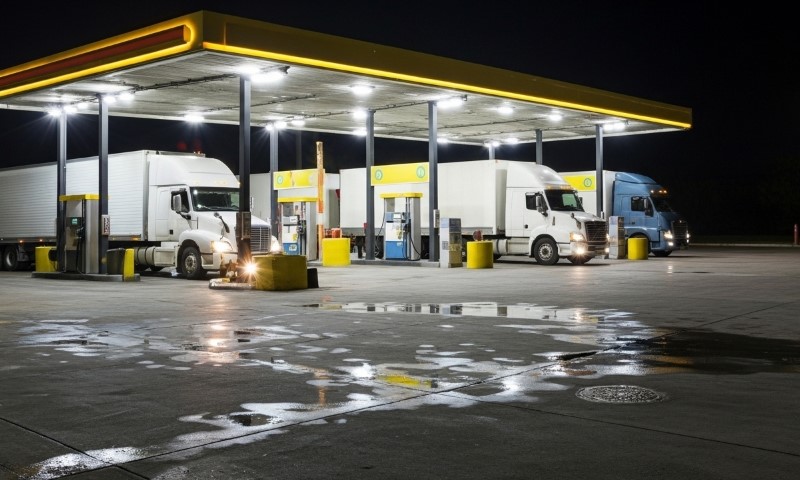If you run trucks for a living, fuel is a margin maker or a margin killer. In 2025, fleets are squeezing more miles from every gallon through tighter specs, smarter routing, and disciplined driving.
But geography still matters. Some states make it easier to maintain steady speeds, avoid stop-and-go, cut idle time, and plan refuels at fair prices. Others load fleets with congestion, steep grades, and rules that quietly drain tanks.
We prepared a guide to where real-world fuel economy tends to be strongest right now, why those states perform well, and how to use the same logic to improve results wherever your trucks operate.
1. Nebraska
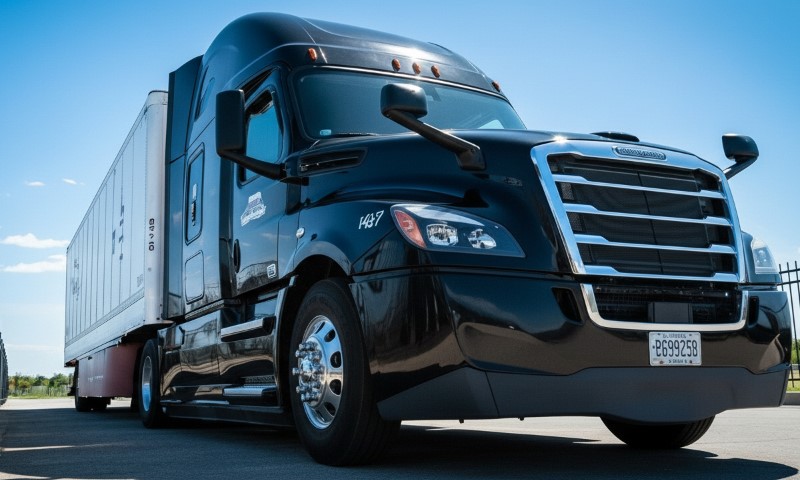
Why it wins: Long, flat interstates like I-80, light congestion, and moderate posted limits let trucks run smoothly. Even gentle rolling grades cost less fuel compared to hilly regions.
Congestion signal: Nebraska’s metros rarely appear in FHWA’s urban congestion reports . Speeds stay steady across most duty cycles.
Pro tip: NHTSA studies show that you should hold cruise between 60–65 mph where the schedule allows. Combine that with verified aero kits and low-rolling-resistance tires like Hubtrac tires from Austria for strong returns.
2. Kansas
Why it ranks: I-70 and key freight corridors allow long, uninterrupted runs. Terrain is mild, and top bottlenecks are limited.
Congestion signal: Kansas City sees rush-hour slowdowns, but statewide traffic remains favorable.
Operational advice: Run conservative cruise and manage idle time during hot summer layovers. Progressive shifting saves more fuel than drivers think.
3. South Dakota
Why it ranks: Sparse population and wide-open highways keep traffic moving consistently. Less stop-and-go means fewer pumping and acceleration losses.
Weather note: Winters can hit MPG hard. Side skirts and good aerodynamic maintenance help fight headwinds and drag.
Data context: NREL studies show how small aero degradations compound losses in crosswinds.
4. Iowa
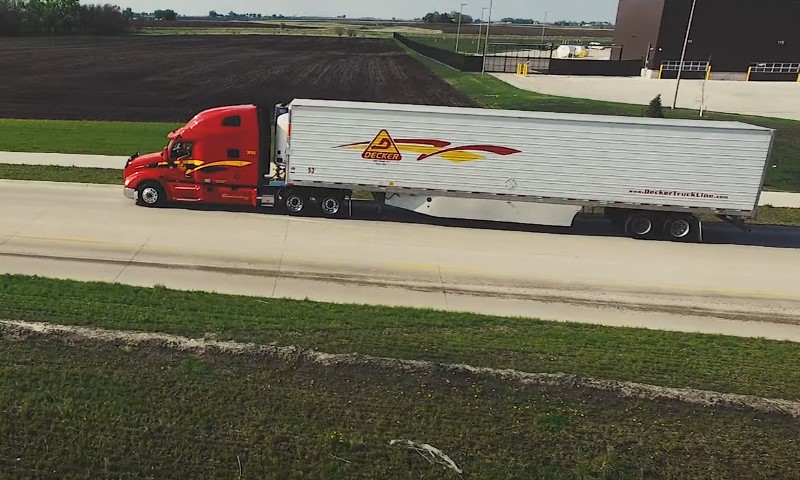
Why it ranks: Balanced geography and moderate congestion help fleets keep a stable rhythm. Most metro areas report manageable delay levels in the Urban Mobility Report .
Pro tip: Use SmartWay-verified tires and trailer skirts to protect highway-cycle efficiency. Iowa’s strong shipper network means many customers already support SmartWay carriers.
5. North Dakota
Why it ranks: Long rural stretches with almost no recurring bottlenecks make for smooth cruise conditions.
Cold factor: Frigid weather reduces combustion efficiency. Plan for block heaters or approved idle-reduction gear instead of long idles.
Parking angle: FHWA and FMCSA data highlight the value of safe parking. The more available spaces, the fewer wasted miles circling lots.
6. Oklahoma
Why it ranks: Its I-35, I-40, and I-44 corridors see less congestion than neighboring Texas. Flow around Oklahoma City and Tulsa is relatively clean.
Fuel planning: The Gulf Coast region posts the lowest average diesel prices per EIA reports . Refueling on Oklahoma legs can improve margins even if MPG stays constant.
7. Wyoming
Why it ranks: Minimal traffic across I-80 and I-25 allows long stretches of uninterrupted cruise control.
Terrain challenge: Mountain grades over the Continental Divide create energy penalties. Gear selection and speed management are critical to minimize losses.
Planning note: NREL’s grade models show measurable fuel consumption increases on sustained climbs for heavy combinations.
8. Montana
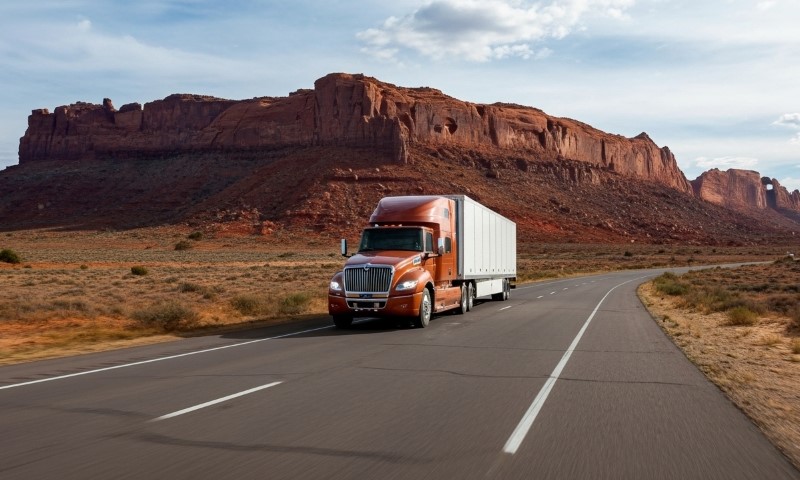
Why it ranks: Open rural highways and light congestion help steady speeds. Grades on mountain passes still hurt fuel use, but elsewhere conditions are excellent.
Driver tip: Moderate cruise speeds at higher elevations to offset drag. Even dropping 5 mph can yield several percent in savings.
9. New Mexico
Why it ranks: Long, flat runs on I-10 and I-40 dominate fleet duty cycles. Bottlenecks are limited to urban centers like Albuquerque.
Idle management: Several cities along I-10 enforce anti-idling rules. Equip APUs or use electrified parking to comply and save fuel.
10. Nevada
Why it ranks: Between Las Vegas and Reno lies a lot of quiet highway. I-80 and I-15 allow steady cruise with minimal stops.
Watchouts: High posted limits tempt faster driving. The NHTSA fuel-efficiency study shows drag grows rapidly with speed, so maintain moderate settings for best results.
Honorable Mentions
| State | Strength | Key Notes |
| Idaho | Long rural stretches | Watch for high speed limits that erode MPG gains. |
| Utah | Similar benefits to Idaho | Desert crosswinds can increase drag. |
| Texas | Huge network for steady cruise | Heavy congestion in Houston and Dallas offsets gains. |
| Oregon | Moderate congestion, strong SmartWay culture | Tough idling restrictions in some areas support fuel savings. |
What “Fuel Efficient” Means at the State Level
@grmilogistics The MOST expensive state to fill up? 🚚⛽ The average price per gallon in this state is a whopping $5.29 / gallon. Can you guess the state? 👀 Answer at the end. Did you know we are hiring drivers in the US? 🇺🇸 Learn more today! – Link in bio #trivia #fuel #roadtrip #CDL #hiring #drivers #semi #bigrig #trucking #truck #otr #otrdriver #dispatch #travel #job #logistics
There is no single scoreboard of average heavy-truck miles per gallon by state. The right way to answer the question is to combine the measurable conditions that move fleet fuel economy up or down:
Key Factors That Shape State-Level Efficiency
- Congestion and cruise steadiness: Holding constant speed avoids waste from braking and re-acceleration. Federal Highway Administration (FHWA) congestion data and ATRI bottleneck reports are useful guides.
- Speed environment: Higher limits help schedules, but fuel efficiency falls sharply as aerodynamic drag climbs with speed.
- Terrain and grade: Climbing burns energy; descending wastes some of it in braking. National Renewable Energy Laboratory (NREL) data quantify the grade penalty in heavy-duty cycles.
- Idling rules and parking: States with clear anti-idling policies and good truck parking infrastructure allow fleets to cut overnight fuel burn.
- Fuel price predictability: Prices don’t change MPG directly but affect where and when fleets refuel.
- Fleet technology adoption: EPA SmartWay participation reflects states where carriers use verified aerodynamic kits, tires, and idle-reduction systems.
States Where Fuel Economy Is Harder to Protect
- California, New York, New Jersey, Massachusetts: Dense metro networks, frequent bottlenecks, and complex grades make fuel savings difficult. California’s 55-mph truck limit helps somewhat, but congestion cancels out much of the gain.
- Washington and Pennsylvania: Mountain grades and urban density combine to lower real-world MPG. Washington’s strict anti-idling enforcement helps emissions but requires fleets to invest in APU or battery HVAC systems for overnight comfort.
The common factor across these regions is heavy stop-and-go traffic that keeps engines burning fuel while barely covering ground.
How the Levers Actually Move MPG
Every fleet knows fuel economy isn’t luck. It comes from the small levers that drivers, dispatchers, and managers pull every day: speed, terrain, traffic, and idling. Each one changes the math behind every mile.
Speed and Aerodynamics
Aerodynamic drag rises roughly with the square of speed, while the power demand climbs with the cube. In short, small speed increases cost large amounts of fuel.
- Reducing cruise speed by 5 mph can save several percent of fuel burn.
- Verified side skirts, boat tails, and gap reducers amplify that benefit.
- NREL and NHTSA both confirm measurable gains from lower cruise targets and full aerodynamic setups.
Grade and Terrain
Long climbs hurt efficiency. Even a mild 2 percent grade over several miles can add double-digit energy penalties. In some cases, a route that is slightly longer but flatter wins overall on fuel use.
Congestion and Bottlenecks
ATRI’s latest report estimates that trucking lost more than $100 billion to congestion. Every minute spent idling burns fuel without producing revenue miles. FHWA’s congestion dashboards let dispatchers plan around predictable slow zones.
Idling Rules and Overnight Strategy
Reducing idle hours cuts both fuel and maintenance costs. APUs, battery-based HVAC, or plug-in shore power are now common solutions.
In June 2025, FHWA and FMCSA clarified funding channels under Titles 23 and 49 that allow states to expand truck parking. Keeping track of those projects helps planners save both time and fuel.
A Simple State-Aware Playbook for Better MPG

Getting better fuel economy often comes down to habits, not luck. Here’s a straightforward checklist that helps fleets adjust by state and keep MPG strong all year.
1. Plan Cruise by Corridor
Use IIHS speed tables to identify high-limit corridors, then train drivers to hold a moderate cruise instead of maxing out posted speeds. Steady and moderate beats quick and jerky every time.
2. Time Metro Crossings
FHWA’s Quarterly Urban Congestion Reports reveal when traffic peaks. Shifting deliveries by 30 to 60 minutes can remove a truck from the worst traffic and protect daily MPG.
3. Choose Refueling Points with Data
The EIA weekly diesel report remains the best reference for price spreads. The Gulf Coast region, including Oklahoma and Texas, almost always sits lower than national averages.
4. Control Idle Time in Strict States
Cross-check idling laws on the DOE Alternative Fuels Data Center. Many states enforce three-to-five-minute limits. Equip trucks accordingly before entering those jurisdictions.
5. Spec Trucks for the Terrain You Run
Downsped powertrains with correct axle ratios excel on long flat routes. In hilly regions, prioritize torque and engine braking over tall gearing. The right match prevents over-revving and wasted fuel.
Quick Reference Table
| Rank | State | Why It Helps MPG | Planning Notes |
| 1 | Nebraska | Long flat I-80, low congestion | Moderate cruise, aero kits pay off quickly. |
| 2 | Kansas | Few bottlenecks, mild terrain | Watch Kansas City peaks; steady otherwise. |
| 3 | South Dakota | Sparse traffic | Guard against wind and winter drag. |
| 4 | Iowa | Manageable congestion | Use SmartWay tires and skirts. |
| 5 | North Dakota | Minimal congestion | Plan idle-reduction for cold weather. |
| 6 | Oklahoma | Good flow on key corridors | Refuel in Gulf Coast region when possible. |
| 7 | Wyoming | Light traffic | Offset grades with disciplined speeds. |
| 8 | Montana | Open roads | Manage mountain passes with gear control. |
| 9 | New Mexico | Long interstate runs | Follow local idling ordinances. |
| 10 | Nevada | Consistent rural mileage | Keep cruise moderate at high limits. |
Fuel Prices by Region
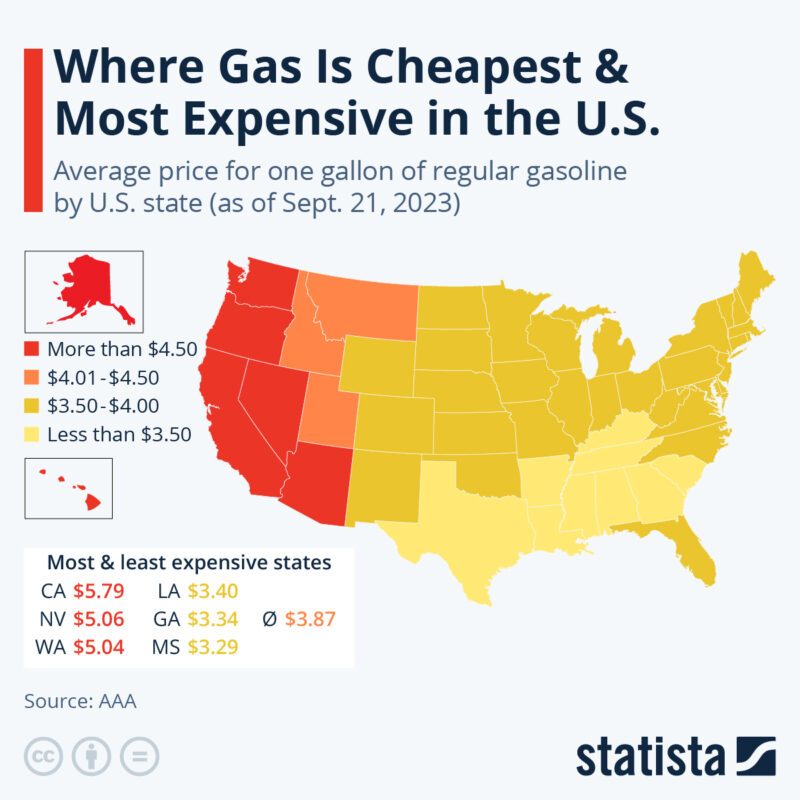
Fuel price does not alter physical efficiency, but it shapes cost outcomes. EIA’s Gasoline and Diesel Fuel Update shows clear regional spreads:
- Lowest averages: Gulf Coast (Texas, Louisiana, Oklahoma)
- Highest averages: West Coast, particularly California, due to taxes and environmental program costs
Planning refuels around those borders is a simple way to preserve profit without bending safety or legal limits.
SmartWay and Fleet Technology Still Matter Most
No matter where you run, equipment discipline beats geography. EPA SmartWay-verified components continue to deliver measurable results. Partners have logged billions of gallons saved through:
- Low-rolling-resistance tires
- Tractor-trailer aerodynamics
- Idle-reduction technologies
- Driver coaching supported by telematics
NREL’s drive-cycle simulations confirm that even in congested states, consistent driving style and proper equipment can close much of the gap.
Bottom Line
If you are chasing the best fuel-efficiency conditions in 2025, the Plains and Mountain-Plains states are your best bet. Nebraska, Kansas, South Dakota, Iowa, and North Dakota lead the pack for smooth terrain and steady cruise opportunities.
Add Wyoming, Montana, New Mexico, and Nevada to that list for solid honorable mentions.
Dense coastal states like California, New York, and New Jersey remain the toughest places to protect fuel economy because of congestion and terrain.
You cannot move your customers, but you can move the levers within reach:
- Time metros using congestion data.
- Moderate cruise where limits are high.
- Match tractor specs to terrain.
- Enforce idle limits with the right comfort tech.
- Refuel strategically using EIA’s weekly updates.
Put those habits together and your per-mile fuel cost will drop, wherever the road takes you.

Hey, I’m Derek Vaughn. I love exploring how tech, business, and productivity come together to shape the way we work. At PulseBlueprint, I write about tools, trends, and strategies that actually make a difference—no fluff, just real-world insights.

